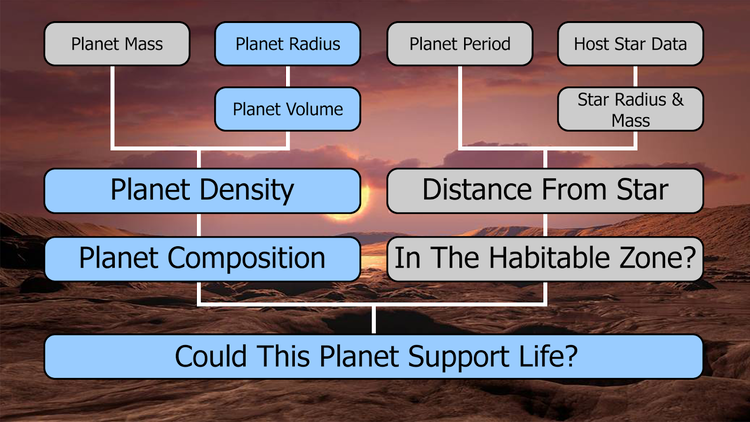Importance of Planet Radius
Importance of planet radius
In order to calculate the volume of the planet, you must know the planet radius. Finding the planet radius is the first step to finding whether or not your exoplanet could support life. Your findings will allow your team to create a strong and compelling request for your exoplanet to be studied by the James Webb Space Telescope.

Task 1: Finding Exoplanet Radius Using Light Curve




Now that you have a better understanding of light curves, watch the following video to learn about the equation we will use to find the planet radius.
Remember, this equation is the first step in determining if your exoplanet is rocky or gaseous, and whether it could support liquid water on its surface!


Look confusing? Don’t worry, you don’t have to do this math by hand! Input your numbers into the google sheet as directed below and the equations will be automatically calculated for you.

While you wait, did you know...

The google sheet support




Then, input the mid-transit brightness value of Kepler 62 in cell B3 of the Google Sheet below.
The radius of the planet, Kepler 62f, will be calculated automatically in units of Earth radii in cell B4 of the Google Sheet below.
what are Earth radii?



